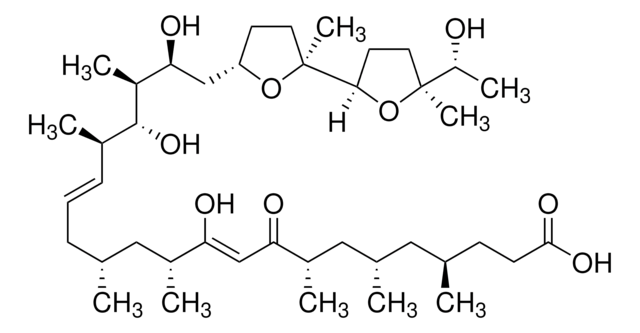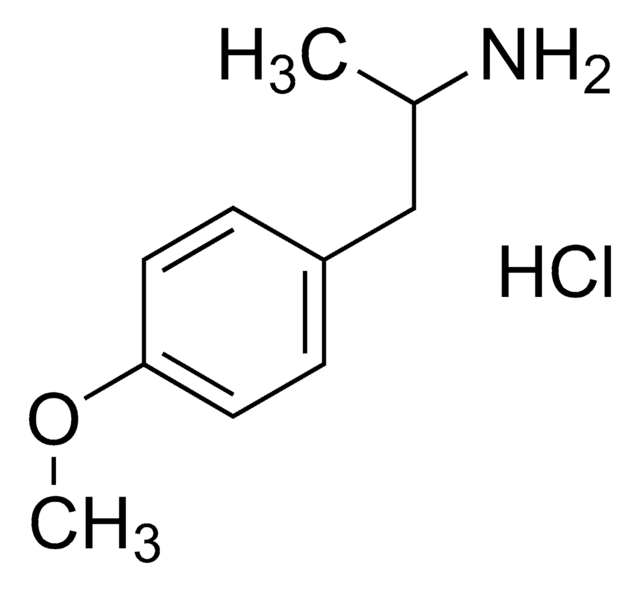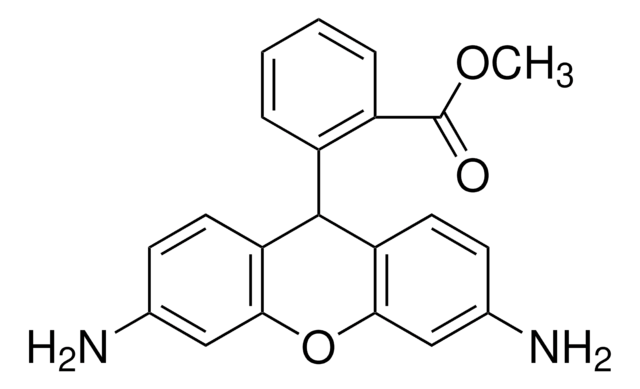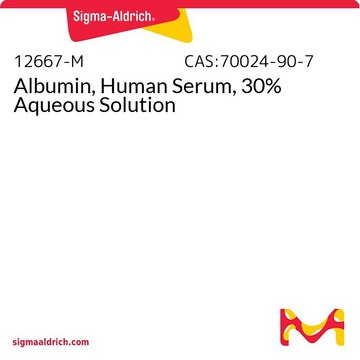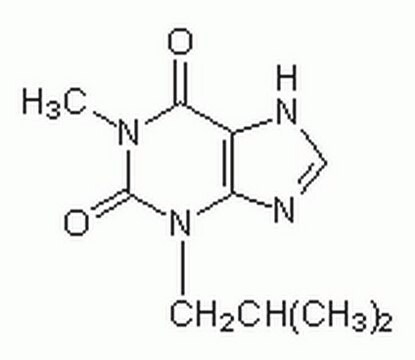5.00582
Phorbol-12-myristate-13-acetate
≥98% (HPLC), liquid, PKC activator, Calbiochem®
Synonym(e):
InSolution Phorbol-12-myristate-13-acetate, 12-O-Tetradecanoyl-phorbol-13-acetate, PMA, TPA
About This Item
Empfohlene Produkte
product name
Phorbol-12-myristate-13-acetate, InSolution, ≥98%, 10 mM in DMSO, extremely potent mouse skin tumor promoter
Qualitätsniveau
Assay
≥98% (HPLC)
Form
liquid
Hersteller/Markenname
Calbiochem®
Lagerbedingungen
OK to freeze
avoid repeated freeze/thaw cycles
desiccated (hygroscopic)
protect from light
Lagertemp.
−70°C
InChI
1S/C36H56O8/c1-7-8-9-10-11-12-13-14-15-16-17-18-29(39)43-32-24(3)35(42)27(30-33(5,6)36(30,32)44-25(4)38)20-26(22-37)21-34(41)28(35)19-23(2)31(34)40/h19-20,24,27-28,30,32,37,41-42H,7-18,21-22H2,1-6H3/t24-,27+,28-,30-,32-,34-,35-,36-/m1/s1
InChIKey
PHEDXBVPIONUQT-RGYGYFBISA-N
Allgemeine Beschreibung
Biochem./physiol. Wirkung
PKC
Ca2+-ATPase
Verpackung
Warnhinweis
Physikalische Form
Rekonstituierung
Sonstige Hinweise
Tepper, C.G., et al. 1995. Proc. Natl. Acad. Sci. USA92, 8443.
Oishi, K., and Yamaguchi, M. 1994. J. Cell. Biochem.55, 168.
Macfarlane, D.E., and O′Donnell, P.S. 1993. Leukemia7, 1846.
Ghandi, V.C. and Jones, D.J., 1992. Neuropharmacol.31, 1101.
Hortelano, S., et al. 1992. J. Biol. Chem.267, 24937.
Kontny, E., et al. 1992. Eur. J. Pharmacol.227, 333.
Zanaboni, P.B., et al. 1992. J. Appl. Physiol.73, 2011.
Saltis, J., et al. 1991. J. Biol. Chem.266, 261.
Beguinot, L., et al. 1985. Proc. Natl. Acad. Sci. USA82, 2774.
Perchellet, J. 1985. Carcinogenesis6, 567.
Nishizuka, Y. 1984. Science255, 1365.
Mastro, A. 1982. Lymphokines6, 263.
Rechtliche Hinweise
Signalwort
Danger
Gefahreneinstufungen
Acute Tox. 3 Dermal - Acute Tox. 3 Inhalation - Carc. 2 - Eye Irrit. 2 - Resp. Sens. 1 - Skin Irrit. 2 - Skin Sens. 1
Lagerklassenschlüssel
6.1C - Combustible, acute toxic Cat.3 / toxic compounds or compounds which causing chronic effects
WGK
WGK 2
Flammpunkt (°F)
188.6 °F - (Dimethylsulfoxide)
Flammpunkt (°C)
87 °C - (Dimethylsulfoxide)
Analysenzertifikate (COA)
Suchen Sie nach Analysenzertifikate (COA), indem Sie die Lot-/Chargennummer des Produkts eingeben. Lot- und Chargennummern sind auf dem Produktetikett hinter den Wörtern ‘Lot’ oder ‘Batch’ (Lot oder Charge) zu finden.
Besitzen Sie dieses Produkt bereits?
In der Dokumentenbibliothek finden Sie die Dokumentation zu den Produkten, die Sie kürzlich erworben haben.
Kunden haben sich ebenfalls angesehen
Unser Team von Wissenschaftlern verfügt über Erfahrung in allen Forschungsbereichen einschließlich Life Science, Materialwissenschaften, chemischer Synthese, Chromatographie, Analytik und vielen mehr..
Setzen Sie sich mit dem technischen Dienst in Verbindung.



